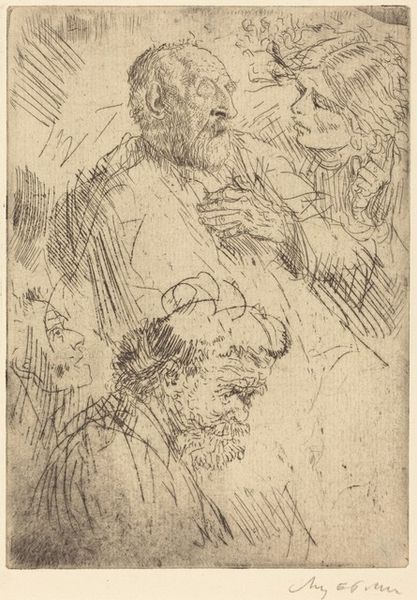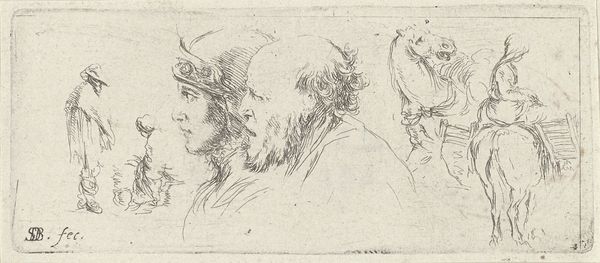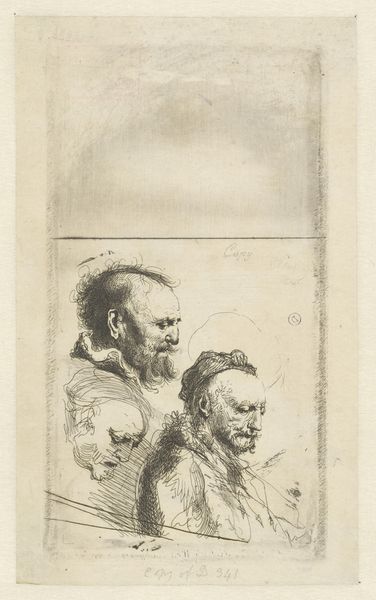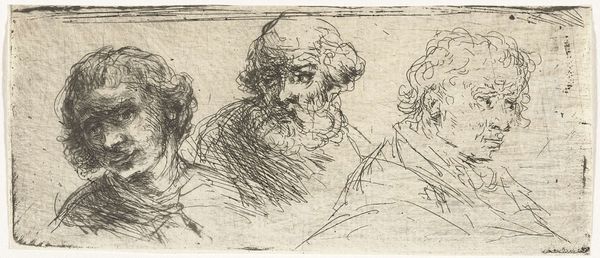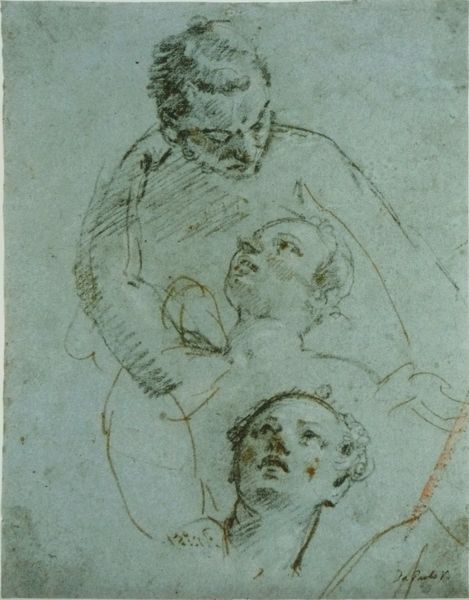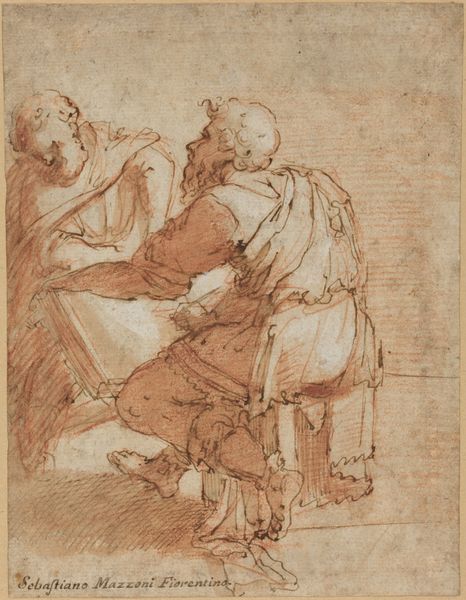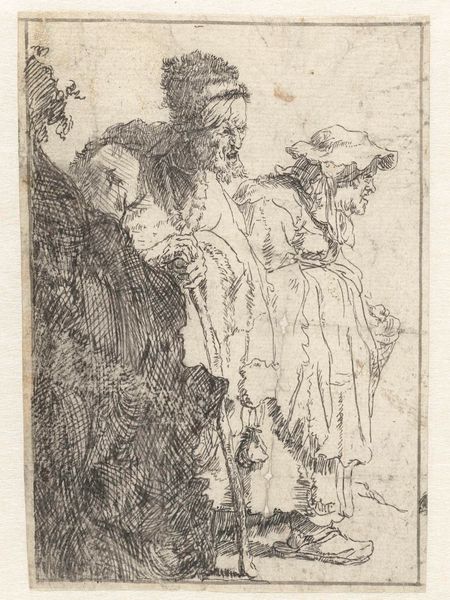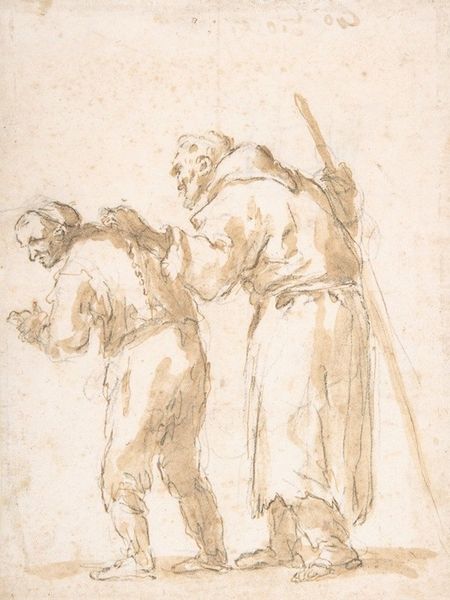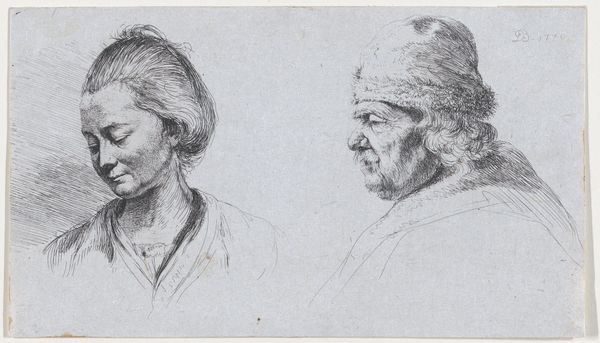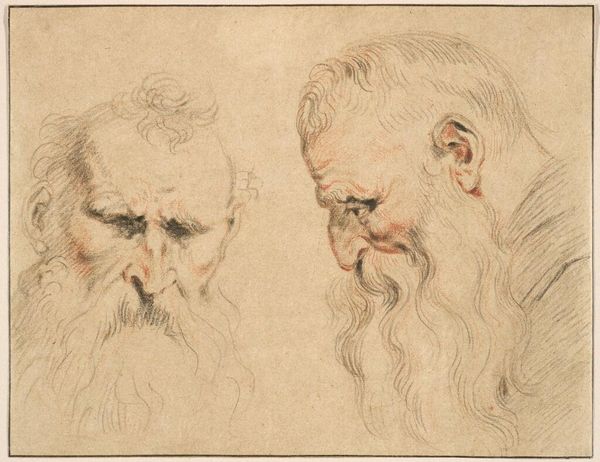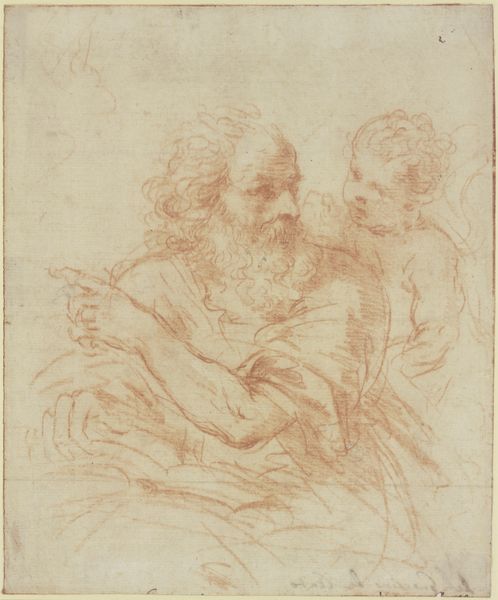
drawing, print, etching
#
portrait
#
drawing
#
baroque
# print
#
pen sketch
#
etching
#
pencil sketch
#
figuration
Dimensions: height 105 mm, width 85 mm
Copyright: Rijks Museum: Open Domain
Curator: Here at the Rijksmuseum, we’re looking at Rembrandt van Rijn’s "Three Studies of Old Men’s Heads," dating from around 1630. It’s an etching, a print, showcasing a few different perspectives on aging. What strikes you most? Editor: Immediately, it’s the stark contrast of the heavy lines with the emptiness. It’s almost unsettling—the negative space feels charged, like a hidden, unspoken element of the subjects' minds. Curator: That tension resonates. These weren't necessarily portraits of specific people, but what Rembrandt termed 'tronies,' studies of character and emotion. Note the deliberate contrasts—the uppermost head gazes resolutely to the side, while the figure below seems consumed by internal thought. Editor: Exactly. And that etching technique, those densely hatched lines, almost create a sense of weariness on their faces. The lines themselves are heavy with the weight of time. I see parallels in their faces that point to common origins; is that cultural memory surfacing through physical features? Curator: Possibly, especially given the era's heightened awareness of physiognomy, but also within Rembrandt’s visual repertoire. Etchings like these were ways for him to experiment with conveying profound inner states— melancholy, wisdom, or simply the effects of age—using just line and shadow. Consider that in Dutch Golden Age portraiture, depicting the elderly often carried messages about experience and virtue. Editor: Yet here, those potential virtues seem to wrestle with an encroaching darkness. The lower face is swallowed by lines, a web almost concealing its form; only hints of the profile pierce through. Is this the weight of memory, loss, or disappointment etched onto the face? The composition seems fragmented, incomplete even. Curator: A productive incompleteness. Rembrandt leaves room for us to project our own readings. These ‘tronies’ are not mere faces, but reflections of human vulnerability and resilience across time. Editor: A powerful observation, particularly because, when reduced to a drawing such as this one, there are only formal elements on which to focus one’s interpretation. Thank you for highlighting the richness beneath the surface. Curator: My pleasure. Hopefully, listeners feel they have encountered these figures on multiple levels.
Comments
rijksmuseum about 2 years ago
⋮
The old man in these four little etchings has traditionally been identified as Rembrandt’s father, Harmen Gerritsz van Rijn. Whether this is actually the case remains uncertain, but it is striking that Rembrandt made them all in 1630, the year of his father’s death. He depicts the wrinkled skin so precisely that it is possible that he worked directly on the etching plate while his model sat to him.
Join the conversation
Join millions of artists and users on Artera today and experience the ultimate creative platform.
